|
Diseases of Poultry
By Ivan Dinev, DVM, PhD
|
BOTULISM
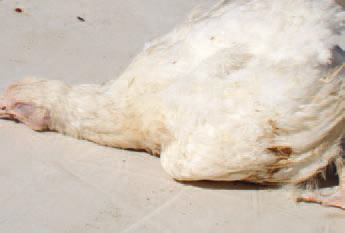
160.Botulism is an intoxication caused by the toxins of Clostridium botulinum. With the exceptions of vultures, most birds are susceptible. The clinical signs appear within a few hours to several days. Flaccid paresis of legs, wings, necks and eyelids is observed. The paresis is rapidly progressing to paralysis and the birds fall into a deep coma with neck and head typically extended forward. There are no typical gross lesions. The treatment with selenium, vitamins A, D and E as well as with some antibiotics as chlortetracycline, bacitracin etc. could reduce mortality rate.
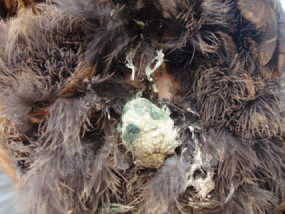
161Spirochaetosis is a septicaemic disease characterized by depression, progressive paresis, paralysis and inflammatory necrobiotic changes in parenchymal organs and the gastrointestinal tract. The birds are depressed, cyanotic; greenish diarrhoea with considerable amounts of urates is observed.
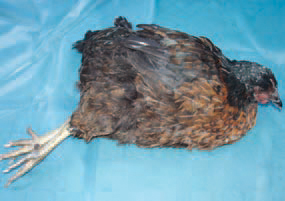
162The transmission of spirochaetosis is related to the distribution of the fowl tick Argas persicus that is the reservoir and main vector. Hens, turkeys, geese, ducks, pheasants etc. from all ages are susceptible. At a later stage, paresis and paralysis are developing, the birds become somnolent and comatose.
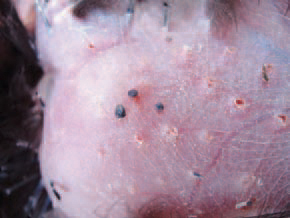
163After removal of plumage, the ticks, adhered to the skin, are discovered. The aetiological agent is Borrelia anserina, a highly motile spirochaete with 5-8 coils. The organism is not resistant outside the host and could exist only in some vector.
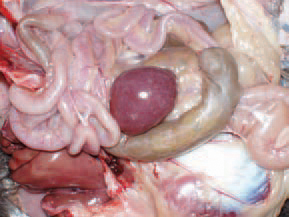
164. A typical finding for spiro-chaetosis is the enlarged spleen with marble-like appearance. A. persicus remains infective for over 430 days and transmit spiro-chaetes to its progeny. Spirochaetes could be identified in Giemsa-stained blood smears. In the late stage of the disease, spirochaetes could not be detected.
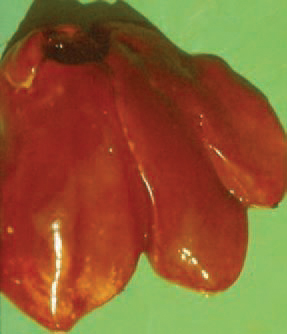
165The liver is often enlarged, mottled with necroses of a various size and marginal infarctions. Usually, bile-coloured mucoid enteritis is observed. The arsenics as well as some antibiotics including tylosin, tetracycline and penicillin are effective for treatment of infected birds. The application of vaccines is successful, but the acquired immunity is short and revaccinations are needed.






